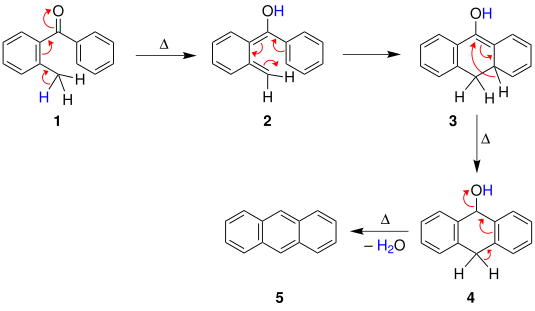Elbs reaction
The Elbs reaction is an
Scope
The Elbs reaction enables the synthesis of condensed aromatic systems. As already demonstrated by Elbs in 1884 it is possible to obtain anthracene through dehydration. Larger aromatic systems like pentacene are also feasible. This reaction does not take place in a single step but leads first to dihydropentacene that is dehydrogenated in a second step with copper as a catalyst.[4]

The
The Elbs reaction is sometimes accompanied by elimination of substituents and can be unsuited for substituted polyaromatics.[5]
Mechanism
At least three plausible mechanisms for the Elbs reaction have been suggested.

Alternatively, in the second mechanism, due to Cook, the methylated aromatic compound instead first undergoes a

A third mechanism has also been proposed, involving
Variations
It is also possible to synthesise

References
- .
- ^ .
- .
- ^ ISBN 978-3-13-541505-5.
- ^ ISBN 9780470638859.
- .
